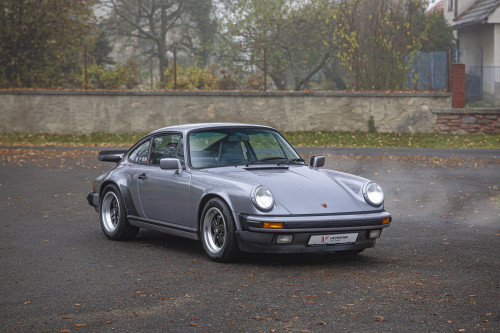Established in Flint, Michigan in 1902, David Dunbar Buick’s eponymous company built its first automobile just two years later, powered by the advanced valve-in-head motor. Joining the General Motors empire in 1910, the Buick Motor Company was riding high by the 1920s, with a reputation for building high quality, strong performing cars at a reasonable price. All Buicks were equipped with front wheel brakes as standard from 1924, along with mechanical refinements like a detachable cylinder head, while six-cylinder engines were adopted as the only choice from 1925 onwards. Improvements kept coming and for 1926 the styling was revised, the chassis, driveshaft and back axle all made stronger and the frame had Zerk lubrication. The gearbox pattern reverted to a more conventional layout in 1927 while the so-called ‘Pregnant Buicks’, with a pronounced bulge below the beltline, saw a dip in sales for the 1929 model year, something hastily rectified for 1930. The radiator featured a new thermostatically-controlled shutter system, while a two-inch reduction in height and a body-length beltline gave the latest Buicks a much sleeker appearance. Three different models were offered to North American customers in 1930, namely with the Series 40, intermediate Series 50 and longer wheelbase Series 60. Driving through a three-speed sliding gear transmission.
The most famous was the Buick Master Six Series 40 and Series 50, based on the wheelbase used, was an automobile built by Buick from 1925 to 1928. This model also competed in period in the Mille Miglia. They coined the name "Master Six" for the high-end cars, powered by the 4.2-litre six cylinder engine. The last Emperor of China Puyi bought two Master Six and started the trend of being China's most popular car. 1927 saw the introduction of the Gothic Goddess hood ornament on all Buick cars. The Master Six used Series 121 and 129 designations in 1929 initially to denote the wheelbase dimensions, then renamed the Series 40 in 1930, after which all six-cylinder engines were suddenly dropped and all models of Buick were equipped with a straight 8, starting in 1931.
This beautiful Series 40 comes from a museum collection. The car has been fully restored. It is equipped with the immortal 258 ci 6-cylinder engine (4.220 ccm) and 3-speed manual transmission, wooden spoke wheels, a stunning swan hood ornament on the hood and a "for the mother-in-law" rumble seat.
It is a great starter car for prewar races and trial. You can use standard wire wheels (they were a hot new thing at the time as an option for an extra charge).
| Production date | 1930 |
|---|---|
| Body Type | Coupe |
| Engine | 4.220 ccm, 82 PS, I6 |
| transmission | Manual |
| Steering | Left Hand Drive |
|---|---|
| Layout | Rear Wheel Drive |
| Color - exterior | Blue / Black |
| Color - interior | Grey |
| Miles/Kilometers shown | 80.506 mls |
|---|---|
| Chassis / VIN | 30008 |
| Location - Country | Czech Rep. |
| Location - City | Hradec Kralove |
2-door coupe body type; RWD (rear-wheel drive), 3-speed manual gearbox; gasoline (petrol) engine with displacement: 4220 cm3, advertised power: 60 kW / 81 hp / 82 PS; characteristic dimensions: wheelbase: 2997 mm; reference weights: base curb weight: 1633 kg

Písek, Czechia

Písek, CZ

Písek, CZ

Písek, CZ

Písek, CZ

Písek, CZ